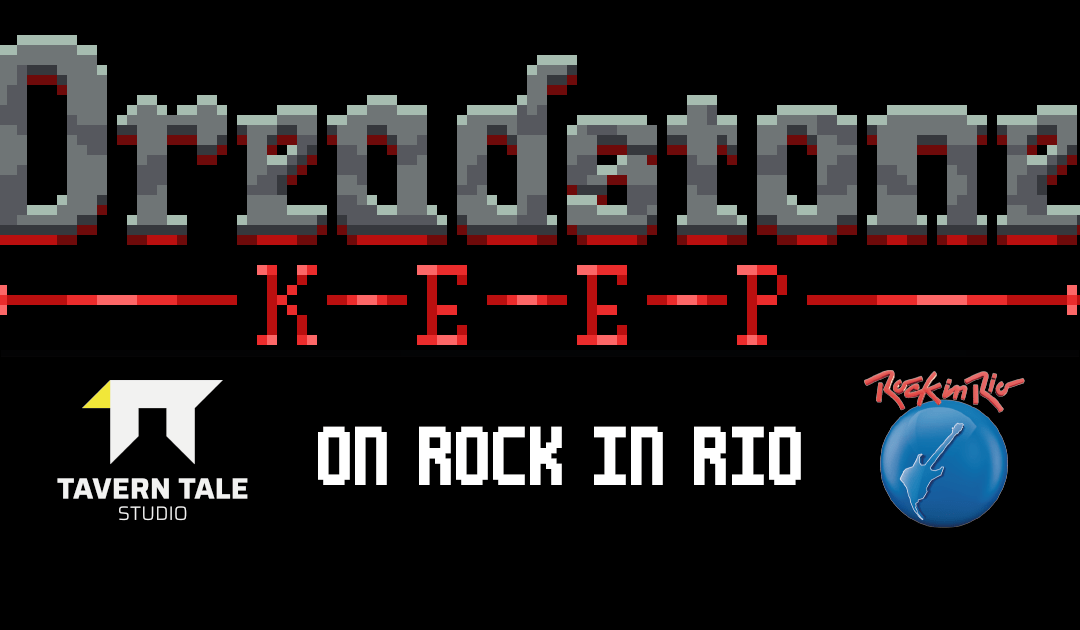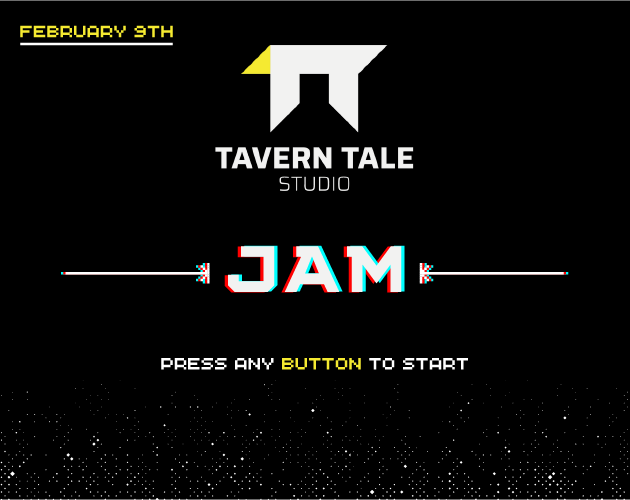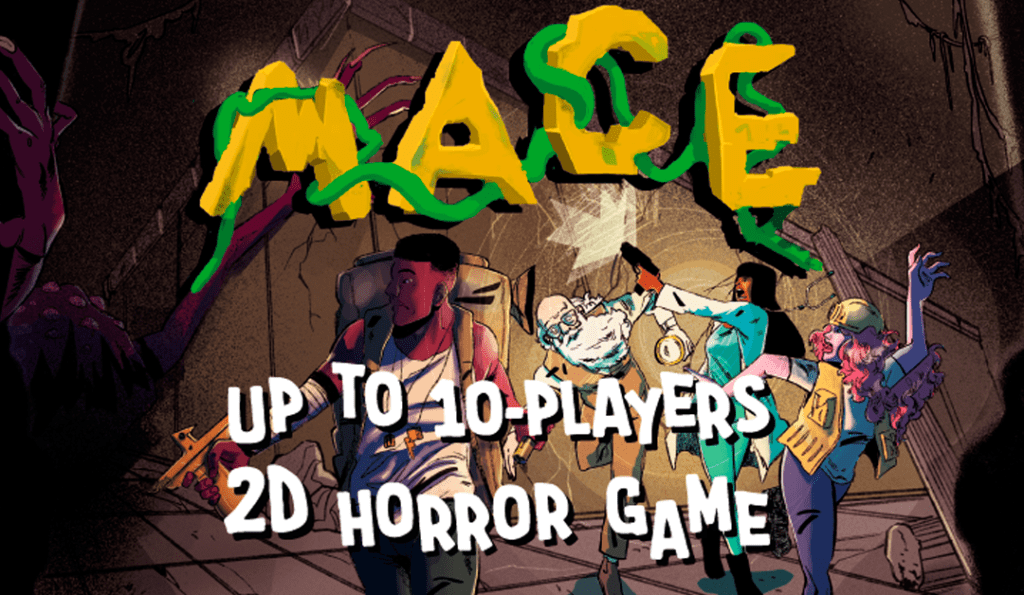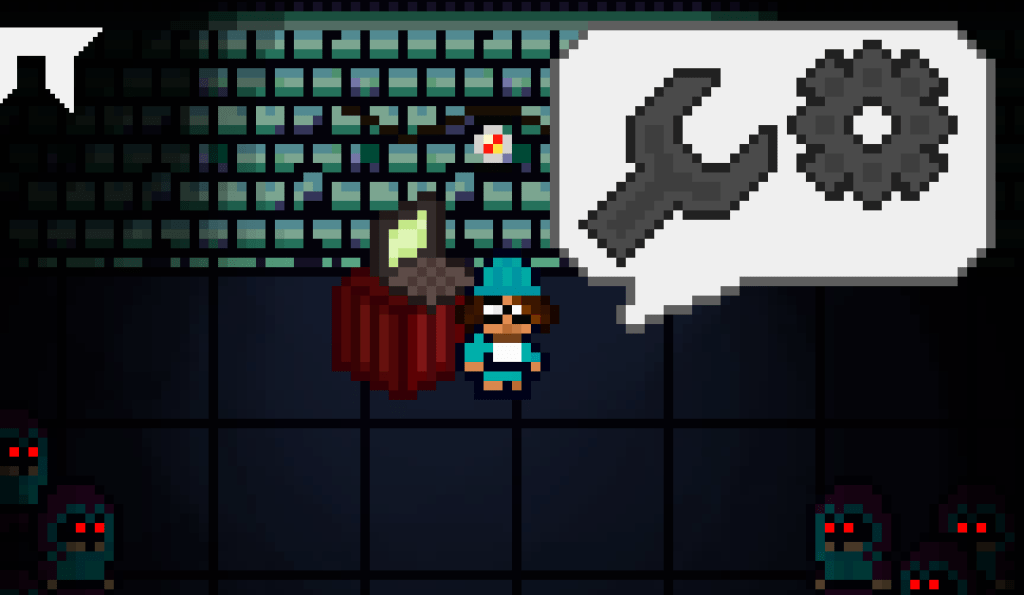Hey everyone! Yes, it is as the title says: our new game, Dreadstone Keep, was presented at the Rock in Rio festival! Amazing, right? But you may ask “what did you guys do to get there?” Well, among other things, we are going to tell this whole tale in this devlog!
During July of this year, during talks with our partners from Indie Hero (you can check them out here , they are amazing) we met some awesome people from Totem (their website here). They were (and still are) providing grants for developers to build games using their technology while allowing the devs to keep full ownership of the game’s IP. It is important to say that their technology makes use of blockchain, but they do it in a way that does not encourage the play to earn model. As a company, we at Tavern Tale abhor the idea of play to earn, so to do actual games using blockchain and not scammy NFT applications surely sounded like an interesting proposal. We were down for it and, by the start of August, the development of Dreadstone Keep had started. We had 6 weeks to develop a whole vertical slice and, during the process, we discovered that the game would be going to Rock in Rio in less than that.
About Dreadstone Keep
If you are not yet familiar with the concept of Dreadstone Keep, the game is a roguelike where the player controls a peasant champion that must delve into a dark fortress, defeat monsters and save his village. All of that in a turn-based mechanic that can both be played in a frenetic speedrun style or in a more focused, strategic manner (giving agency to the player is one of our main focuses at Tavern Tale!). The game idea was amazing, and had a little bit of everything we at Tavern Tale love: a fantasy setting, roguelike mechanics and a strategy flavor that made us get lost while testing the game (you can playtest the game here, at itch io ).
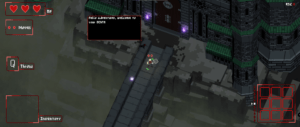
A view from outside of Dreadstone Keep (and a talking crow wishing your death)The integration with the Totem technology was designed in a way that there was no pay to win path through the Totem assets. Instead, we focused on making the game experience different based on what asset you are using. For example: each weapon can have both a material type and an associated element. We made it so that the material type provided an aesthetic change to your weapon, and the element defined which kind of elemental fairy upgrade you would get once you defeated the first boss. Nothing regarding the Totem assets made your play easier from the start, only allowed you to customize the way you play.
Another interesting point of the Totem technology is the legacy events. With them, we were allowed to sort of “share achievements” between games and affect our game somehow with that data. Although we didn’t implement the communication between games fully, we did some mockup that allowed the player to see how the integration would work (if you play the game, pay attention to the crow at the start to see how!)
The Rock in Rio Opportunity:
During the start of the development of Dreadstone Keep, once again our partners from Indie Hero present us with another great opportunity: a booth in an event. And not just any event, for the booth was in the Rock in Rio event, at the city of Rio de Janeiro, here in Brazil. Rock in Rio is the biggest music festival in the world, so this was a great opportunity to showcase the game. With the help of our friends at Totem, Dreadstone Keep was sent to be played by thousands of people during the festival, where we gathered valuable data and feedback from many players!
That surely gave a boost to our development. With a jam-like mentality, we were focusing on polishing our game and making it awesome. Of course, as many game developers know, the polishing part isn’t an easy one, so it was also our most time consuming activity. From fixing some edge cases to iterating on some mechanics, we applied what we learned from our previous projects and game jams, but we also learned a lot more about quickly polishing a game.
During the event, we received a lot of feedback, which was awesome and now gives us a much more clear direction on where we should go with the game.
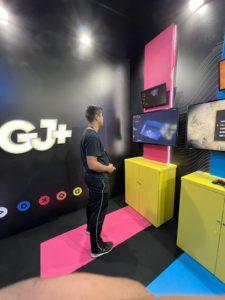
People playing Dreadstone Keep!
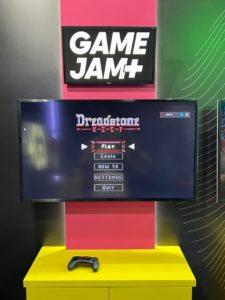
Dreadstone Keep at the Game Jam
Plus / Indie Hero booth in Rock in Rio
Conclusion
Maybe the most important thing other developers can take from this experience is that many great opportunities are hiding within the network of people and partners around you. Many people in our area don’t consider the social aspect of our craft, which leads to situations where you might have a great game technically, but lack opportunities to market or even fund your game. Integrate yourself with local communities and internet groups, for good opportunities can arise through such connections. After all, we met Totem through Indie Hero, and before that we met Indie Hero thanks to our local game developer association group chat.
Another great takeaway is: participate in events and conventions! It is one of the best ways of getting people to know your game. More important than that, however, is getting the feedback they will give you. This will surely give you many insights on how to proceed with your development, and don’t be scared to show an unfinished product. Make it as polished as possible, of course, but you don’t need a complete game to be at a convention. After all, many things will probably change after some feedback!
We hope that this devlog was of help and, of course, if you want to know more, you are very welcome in our discord!
Participate in a growing community where you can learn more about Tavern Tale, our games and game dev in general.
